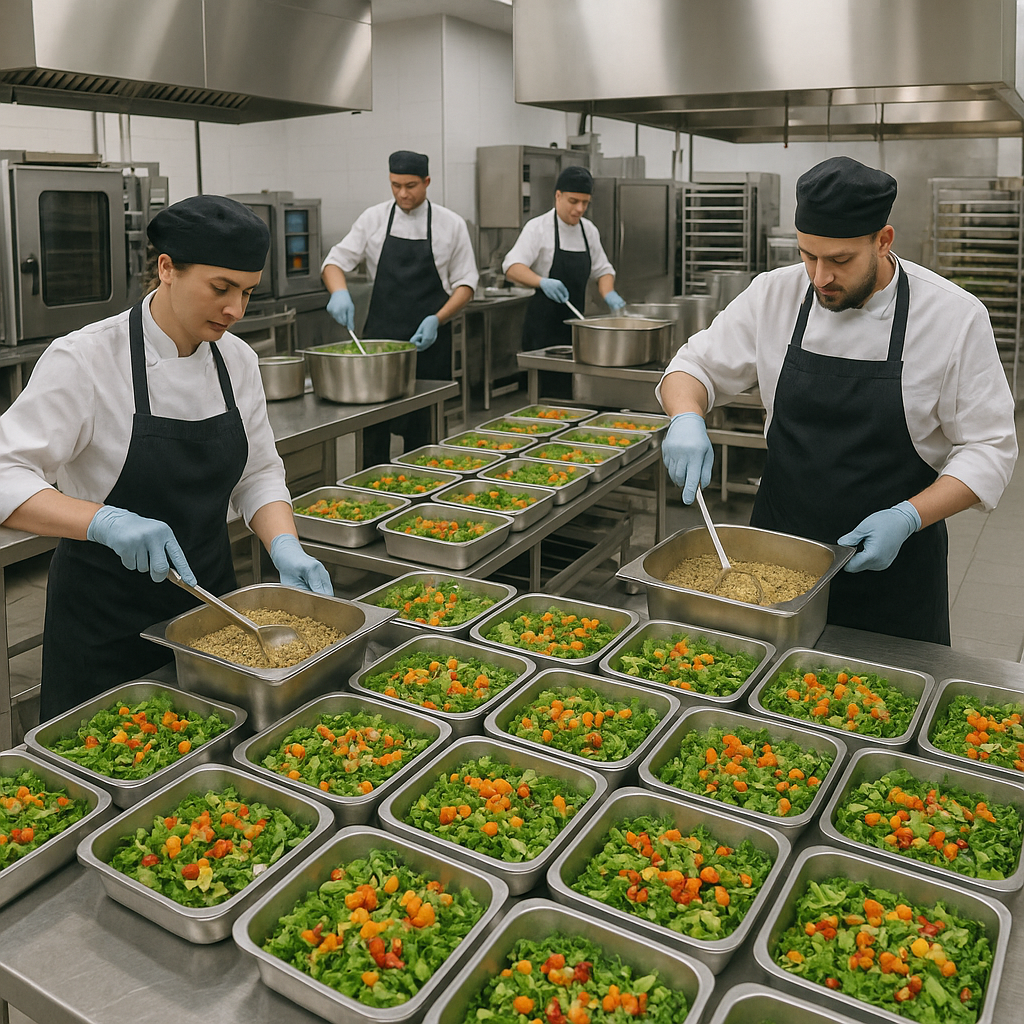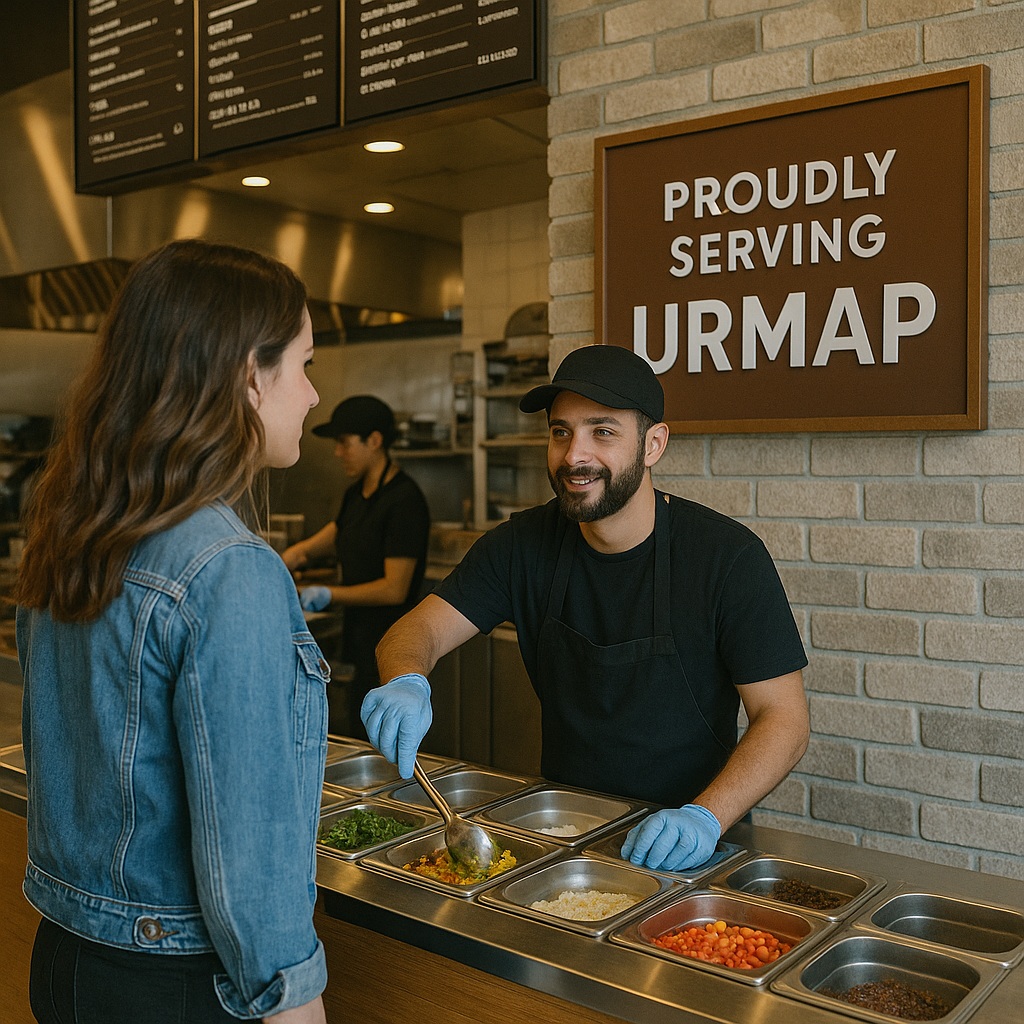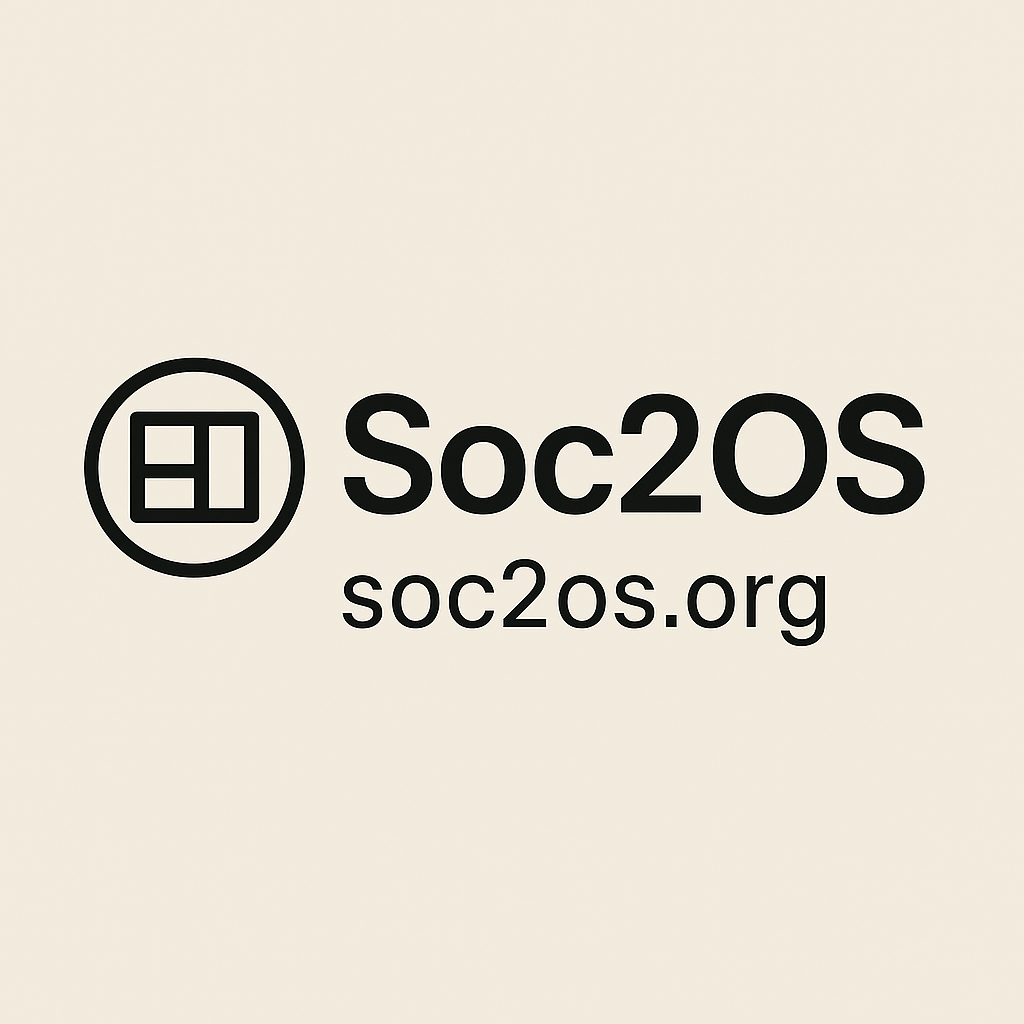

🍽 Universal Restaurant Meal Access Program (URMAP)
Core Concept
A nationwide initiative that ensures no American goes hungry by leveraging existing restaurant infrastructure. Partnering with major chains, URMAP allows anyone to walk into a participating restaurant and request a free, nutritious meal—no questions asked, no paperwork required.
How It Works
- Public-Private Partnership
- Government subsidizes restaurants for each meal served.
- Participating chains (e.g., McDonald’s, Panera, Chipotle, Denny’s) integrate URMAP into daily operations.
- Standardized Nutritious Meals
- Each chain offers at least one balanced, dietitian-approved meal option.
- Meals rotate seasonally to ensure variety and local sourcing.
- Universal Access
- Anyone can request a URMAP meal at the counter, treated the same as a regular customer order.
- No eligibility tests, applications, or waiting periods.
- Operational Simplicity
- Restaurants already manage high-volume food service.
- Government reimbursements flow via digital reporting (similar to SNAP but simpler).
Key Benefits
- Universal Access
Every person in America, regardless of income, immigration status, or circumstance, can eat. - Dignity Preserved
Looks like any normal restaurant visit—no food pantry stigma. - Immediate Impact
Eliminates hunger without bureaucracy. - Nationwide Coverage
Uses existing restaurant density for broad, equitable distribution. - Preventive Social Investment
Hunger is linked to crime, poor education outcomes, health crises, and economic instability. Prevention saves exponentially more than remediation.
Why It Works
- Existing Infrastructure – No need to build new food distribution systems.
- Operational Proof Points – Panera’s “pay what you can” experiment and community cafés proved feasibility.
- Economic Efficiency – Efficiently repurposes waste. Feeding people costs less than the downstream costs of hunger (ER visits, incarceration, lost productivity).
- Corporate Incentive – Restaurants gain goodwill, government contracts, and predictable revenue streams.
Program Model
- Government Role
- Subsidize per-meal cost (fixed reimbursement rate, e.g., $3–$6 per meal).
- Ensure nutritional standards.
- Provide oversight and auditing.
- Restaurant Role
- Offer URMAP meals during normal hours.
- Maintain dignity, consistency, and quality.
- Report meals served for reimbursement.
- Community Role
- Encourage participation and normalize usage.
- Reduce stigma: “This is for everyone.”
Bottom Line
URMAP creates a foundation where no American goes hungry. By ensuring every citizen can count on at least one free, healthy meal a day, society strengthens its base—unlocking better education, employment, health, and stability.
Extend the model from only restaurants to grocery stores (UGMAP) as well – making healthy food available to everyone.
Simple. Universal. Immediate.
Costco’s Role in URMAP/UGMAP
Costco is uniquely positioned to anchor the Universal Restaurant & Grocery Meal Access Programs (URMAP/UGMAP). Its scale, efficiency, and nationwide footprint make it an ideal partner for providing dignified, nutritious meals at cost. Costco’s food courts can be integrated into URMAP, offering standardized meal options that align with program nutrition standards. Simultaneously, its bulk distribution and grocery operations extend UGMAP into food deserts and rural areas, ensuring no community is left behind. By leveraging Costco’s logistics, purchasing power, and trusted brand, URMAP/UGMAP gains both affordability and reach—delivering meals at scale while preserving dignity and normalcy for participants. Because of its production capacity, Costco could also prepare more meals than it directly serves, with surplus distributed to other participating outlets for maximum coverage.
Food Service Waste: The Hidden Abundance
The U.S. food service industry already generates vast surplus. Restaurants, grocery chains, and cafeterias discard millions of tons of prepared but unsold food each year — meals that are safe and nutritious but never reach a plate. Estimates suggest 30–40% of all food produced in America is wasted, much of it at the retail and service level. This waste represents not only lost nutrition but also squandered labor, energy, and water. In the context of URMAP/UGMAP, this existing surplus is not a liability but an opportunity: by redirecting it through standardized, reimbursed channels, society can turn today’s waste into tomorrow’s universal meal access.
Funding
Universal Restaurant & Grocery Program (URGP): Cost & Funding Breakdown
This document outlines a sustainable, multi-source funding model for the Universal Restaurant & Grocery Program (URGP). The model is designed to distribute financial responsibility across federal, corporate, state, and public stakeholders, making the program a resilient national project rather than a sole government expenditure.
I. Core Program Concept
The URGP is a two-pronged public-private partnership that guarantees immediate, dignified access to one free, nutritious meal per day for anyone in America, with no questions asked. It operates through two distinct but complementary arms to ensure universal coverage.
- The Restaurant Arm: Partners with major restaurant chains to provide hot, prepared meals in most urban and suburban areas.
- The Grocery Arm: Partners with grocery and general stores to provide standardized, nutritious no-cook meal packages in rural areas and food deserts where restaurant partners are unavailable.
II. Core Program Cost Assumptions
To establish a clear financial target, we’ve made the following conservative estimates:
- Daily Participants: 40,000,000 people
- Agreed-Upon Value Per Meal/Package: $6.00
- Operating Days Per Year: 365
III. Total Annual Program Cost
Based on the assumptions above, the total investment required to run the program at a national scale is:
40,000,000 meals/day × $6.00/meal × 365 days = $87.6 Billion per year
IV. Multi-Source Funding & Contribution Breakdown
The total annual cost is covered by a collaborative partnership, with each stakeholder contributing a strategic share.
| Funding Source | Annual Contribution | Percentage of Total | Cost Per Meal | Rationale & Motivation |
| Federal Government | $40.0 Billion | 45.7% | $2.74 | Primary Funder & Organizer. Realizes massive downstream savings in national healthcare, productivity, and crime reduction. Fulfills a core public good. |
| Corporate Partners | $25.0 Billion | 28.5% | $1.71 | Shared Value & Financial Incentive. Converts food surplus/waste into a reimbursed, tax-deductible asset. Unprecedented positive branding. |
| State & Local Governments | $13.5 Billion | 15.4% | $0.92 | Direct Beneficiary Co-Pay. Sees immediate ROI from reduced strain on local hospitals, law enforcement, and social services. |
| “Round Up for America” Fund | $9.1 Billion | 10.4% | $0.63 | Public Buy-In & Collective Ownership. Voluntary, micro-donations from millions of daily restaurant transactions create a massive, sustainable revenue stream. |
| Total Funding | $87.6 Billion | 100% | $6.00 | A Resilient National Project. |
Access Made Simple: QR + No-App Option
To keep URMAP/UGMAP frictionless, anyone 18 or older can download a simple app that generates a unique QR code linked to their universal meal access. The app manages daily meal credits, tracks surplus use, and integrates with participating restaurants and grocery outlets. For children and teens under 18, no app is required — they simply request a meal directly, ensuring universal coverage without digital barriers. This dual approach guarantees ease for adults while preserving dignity and simplicity for youth.
Scale-Up Strategy: Pilot to Nationwide
URMAP/UGMAP can be introduced first in pilot markets — a handful of cities and regions representing diverse conditions (urban, suburban, rural, and food deserts). These pilots test logistics, app functionality, surplus integration, and nutritional standards while collecting real-time data on uptake and outcomes. Early lessons shape refinements in reimbursement rates, supply chain management, and community engagement. Once proven, the program scales region by region until it achieves full national coverage, ensuring that implementation is both cost-effective and evidence-driven rather than one-size-fits-all from day one.
V. Detailed Benefits for Corporate Partners
Participation in the URGP is designed to be a sound business decision, not just a philanthropic act.
- Strategic Waste Reduction: The program provides a reliable channel to repurpose surplus food that is safe and nutritious but might otherwise be discarded. This converts a 100% financial loss (waste) into a partially reimbursed and tax-deductible asset.
- Enhanced Tax Efficiency: The portion of the meal cost absorbed by the corporation is structured as a significant in-kind, tax-deductible charitable contribution, directly reducing the company’s overall tax liability.
- Unprecedented Brand Value: Association with the program offers unparalleled positive branding and a massive boost to ESG (Environmental, Social, and Governance) scores, attracting socially-conscious customers, investors, and top-tier employees.
VI. Summary of the Model’s Strength
This blended funding model is the key to the program’s feasibility:
- Achieves Universal Coverage: The dual restaurant/grocery model ensures no community is left behind.
- Reduces Federal Burden: The federal government’s share is less than half the total cost, making it far more politically achievable.
- Creates Shared Investment: With contributions from corporations, states, and the public, all stakeholders have a vested interest in the program’s success.
- Fosters National Unity: The “Round Up” component transforms a government program into a collective national effort, building public trust and a shared sense of purpose.
Evaluation Metrics & Fraud Controls
Core Metrics
- Meals Delivered: Number of meals served, broken down by prepared vs. surplus.
- Cost Efficiency: Average reimbursement per meal compared to program baseline ($6 prepared, $3 + $3 credit surplus).
- Coverage: Percentage of eligible population accessing at least one meal per day.
- Health Outcomes: Reduction in malnutrition-related ER visits and diet-related illness rates.
- Waste Reduction: Tons of food diverted from landfill into meals.
- Equity & Access: Usage by demographic groups (urban/rural, income brackets, age).
Fraud Prevention & Controls
- Unique QR Codes for adults: One scan per meal per day, auto-logged in the system.
- Audit Trails: Randomized verification audits of participating outlets.
- Surplus Validation: Surplus meals logged separately with timestamp and inventory match to prevent double-counting.
- Geo-Fencing: Outlets can only redeem meals tied to their registered locations.
- Independent Oversight Board: Civilian + government body with authority to review anomalies, ensure transparency, and publish quarterly reports.
Reporting
- Digital Dashboard: Public, anonymized metrics (meals served, waste reduced, cost efficiency).
- Quarterly Reviews: Compliance checks and performance reports by region.
- Feedback Loops: Outlets and participants can flag issues directly through the app or hotline, feeding into continuous improvement.
Nutrition Standards Made Simple
URMAP/UGMAP only works if the meals provided are genuinely nutritious. To keep it simple and scalable, the program uses an approved meal list. Restaurants, groceries, or caterers can submit a meal design (with ingredients, preparation method, and portion size) for review by a panel of dietitians. Once approved, that meal becomes part of the national URMAP menu and can be served by any participating provider. This avoids constant case-by-case approvals, while ensuring every meal meets baseline standards for balance, calories, and nutrients. Over time, the list can expand seasonally, regionally, and culturally — but always with nutrition at the core.
Complement, Not Replacement
URMAP/UGMAP is not designed to be the only food program or a full replacement for SNAP, WIC, or other assistance initiatives. Instead, it provides a universal baseline — a guarantee that no person in America goes hungry. By ensuring at least one dignified, nutritious meal per day, it strengthens the foundation upon which other programs can build. This safety net is a key ingredient in making America healthier, stronger, and more resilient. And far from being just another cost, the program saves money by preventing the far higher downstream expenses of hunger — from avoidable ER visits and chronic disease, to lost worker productivity, crime, and incarceration. In other words: feeding people well is cheaper than dealing with the consequences of not doing so.
URMAP would be the first universal, stigma-free, immediate food access system in America’s history. It transforms hunger from a crisis into a solved problem — repurposing what is wasted today, no new buildings, no new infrastructure.
Previous: Essential Systems

Leave a Reply